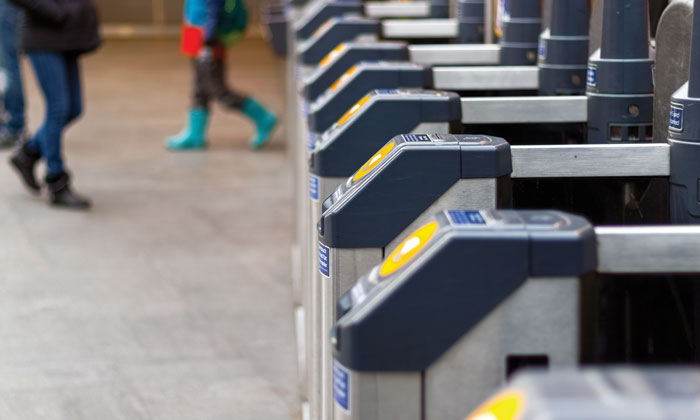Ticketing & Payments: The challenge and the prize
- Like
- Digg
- Del
- Tumblr
- VKontakte
- Buffer
- Love This
- Odnoklassniki
- Meneame
- Blogger
- Amazon
- Yahoo Mail
- Gmail
- AOL
- Newsvine
- HackerNews
- Evernote
- MySpace
- Mail.ru
- Viadeo
- Line
- Comments
- Yummly
- SMS
- Viber
- Telegram
- Subscribe
- Skype
- Facebook Messenger
- Kakao
- LiveJournal
- Yammer
- Edgar
- Fintel
- Mix
- Instapaper
- Copy Link
Posted: 2 June 2017 | Steve Cassidy (ESP Group) | No comments yet
Dr Steve Cassidy, Managing Director of Viaqqio (part of the ESP Group) discusses how efficient and effective ticketing and payment technology can contribute to easing congestion in busy cities by giving travellers more options to use public transportation over private car use.


Last night I walked past some awful congestion on my way home from work. Sheer weight of traffic at peak time, roadworks near a key junction and the usual bits of loading, drop-off and general bad driving habits were to blame. Buses were stuck as were lots of private cars.
I live in a dense city – ideal for public transport. Plus we have a fantastic, cheap and well-used bus service, tram, the full range of app-based on-demand services, a widely available car club and a council which has prioritised spend on cycling.
So how can ticketing and payment technology really help all these travellers get to where they want with a smile on their faces? How can our sector help public transport make this happen?
In June 2016 for the first ESP Easy Travel Index, we asked a representative sample of people across the UK what made local travel difficult. They said that payment method was not an issue – only 5% of people said that lack of choice made local travel difficult. Availability of public transport was the big issue: a lack of convenient timetables to make a trip feasible and routes not connecting (38% and 32% respectively). Cost was up there too: 30% of people said high costs made local travel difficult. Congestion per se was down the list at 18%. Convenience and cost are prime.
Our survey told us 53% of people in the UK felt public transport does not meet their needs, but to alleviate that traffic snarl up we need people to get on public transport and eschew the car. A third of respondents felt that there is no economic alternative to the car with nearly 40% viewing the car as an expensive but necessary evil.
Can ticketing and payment developments improve convenience and cost and make the car unnecessary? What has been happening?
The ticketing sector has ensured that ITSO-based ticketing is now a stable system. At the same time contactless EMV is being developed by the UK Cards Association jointly with the largest rail and bus companies. Mobile based payments have dovetailed into the mass acceptance of contactless. Apple Pay and Google Wallet are embraced by increasing amounts of tech-savvy users. Looking to the future, blockchain technology, its security and distributed ledgers, has lots of potential to offer the payment sector. It can streamline transactions and eradicate lengthy and costly audits (though crypto currencies are tainted by their association to the dark web and fraud).
How can we exploit these ticketing and payment developments to reduce the costs of public transport, improve its convenience and ensure that the car is not perceived to be the only economic option?
I think there are three things.
Firstly, think of a ‘Mobility Service Platform’ (or AirBnB for transport) and integrate payment into this platform. Imagine this ‘Service Platform’ playing back to you all your mobility costs over a monthly period for instance. By aggregating the full costs of your monthly mobility in one place, the total spend on mobility is visible and the elasticity of demand for that mobility increases (elasticity increasing with the proportion of income spent on the good). It is thus more responsive to price changes. And if that playback is made via a ‘Service Platform’ which attracts thousands of users then it will create a marketplace to receive the very offers and deals to generate new demand. But there is a need to fulfil the trip that is then demanded. That’s where the sector steps in.
Secondly, think ‘service’. Any ‘Mobility Service Platform’ must address users’ key concerns – which vary by segment, community and age. We know this from delivering personalised customer service every day for millions of travellers via our award winning contact centre, Journeycall. Our Index told us that people worry about getting lost, missing connections, personal safety and not knowing the location of toilets when they travel. Surprisingly, we found younger people worry the most when travelling (not having the right travel documents was a concern for a large number of young people). The development of our
young persons’ Mobility Service (www.pickandmixproject.com) is co-designing what is important to young people and hard wiring them into the ‘Service Platform’ – payment plays a big part.
And thirdly, think ‘interoperability’. This is key to the customer proposition – travellers just want to travel; not have separate relation – ships with different providers along the route. A unified/ centralised payment channel that can be used selectively by consumers any payments would simplify the proposition, ideally married to basic choice – cash, card, wearables, and account-based.
The acid test of everything we do is whether we can get people out of their cars
Thinking platform, integrated service and interoperability will pose a challenge to governance and ownership models in public transport. The prize – a huge shift to public transport, increased revenues (and smiling faces on that commute) – is so big that this can surely be addressed. Surely?
Related topics
Passenger Accessibility
Issue
Issue 3 2017
Related cities
Europe
Related people
Steve Cassidy (ESP Group)








